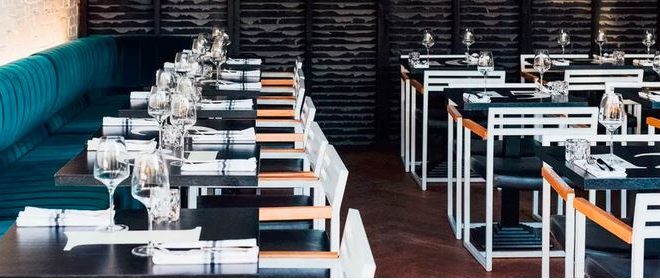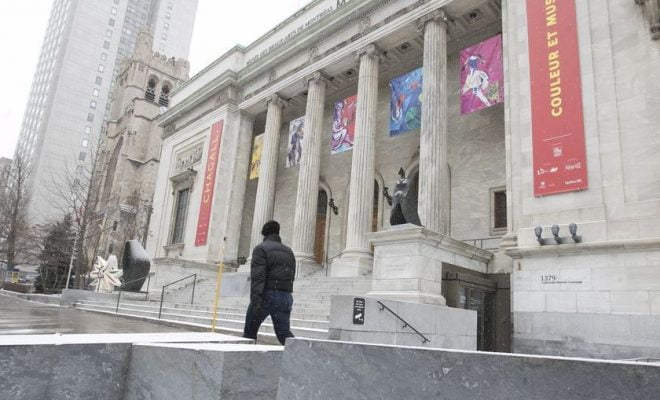In praise of public urban green spaces in Montreal

Those of you on Twitter may have noticed that Montreal has become the darling of urban planners. Several U.S.-based urban designers and Canadian city planners were recently seen waxing poetic about our metropolis’s many delightful parks, gardens and sitting areas. They were also observed singing the current administration’s praises for its investments in pedestrian and cycling infrastructure, its commitment to sustainable urban planning and its colourful and accessible public spaces.
Boston-based urban development specialist Jonathan Berk raved about the city’s 13 summer pedestrianized boulevards and art installations, launching an impressively long Twitter thread comprised of out-of-towners reminiscing about their last trip here or pining for the opportunity to visit. It was nice to just sit back and see our city through the appreciative eyes of others. Montreal can be like a lover you’ve grown familiar with, who you only realize is still extremely attractive the minute you catch a stranger casting a too-long glance their way. It’s easy to become blasé about our daily surroundings. Sometimes it takes someone else pointing them out to make you really look.
The value of public spaces
I’ve always been a fan of public spaces, parks, art installations and the ways we allow nature back into an urban setting. I’m a fervent believer that, for city dwellers (particularly those with no backyards), public spaces are extensions of our homes and the very heartbeat of our communities. They’re deeply essential to the quality of life in a way that we often don’t even notice. We rely on them for exercise, fresh air, peace of mind and gathering spaces — local nooks and favourite spots where we rest, read our books, walk our dogs, take a breather, say hello to our neighbours. During the pandemic, they were our saving grace in every possible way.
As an avid walker and city cyclist, I both notice and appreciate the time and money invested in urban planning and road infrastructure that doesn’t only cater to vehicles. These investments, by the way, have been proven to provide a huge return in public health. While some continue to treat cycling as an annoying imposition in the public space, it’s cyclists who subsidize cars, not the other way around.
I notice when landscaping goes up, when improvements are made to the waterfront, when playground equipment is upgraded. I snap pics of every flowering Montreal alleyway I walk by. I appreciate the public art, the places made available for us to sit, the thought that has been put into making our streets and cycling paths safer and more accessible for the young, the old and the ones in between. I deeply appreciate how my environment influences my mood and my connection to this city.
Much remains to be done
Sure, sometimes I feel like certain bizarre Montreal art installations are the brainchild of that one guy on a unicycle that we all seem to bump into in the Plateau. They’re odd and quirky in that uniquely Montreal artsy-fartsy way that makes no practical sense and leaves us scratching our heads, and they’re sometimes flimsy (many installations are also ephemeral, so that might explain that) and some seem to try too hard. But most are colourful and eye-catching and always have people gravitating towards them. In other words, despite the naysayers, they do what they were designed to do.
Of course, critics will point out that some of this praise might be a tad hyperbolic, considering the many issues the city is currently facing. All is not perfect in paradise. Montreal may be a beautiful place to live in, but it’s a city that’s facing a major housing crunch, inflated real estate prices forcing many off-island and gentrification issues that have longtime residents of now-popular neighbourhoods worried about what the future holds. There aren’t enough playful sculptures of poodles at Place des Arts, urban flower gardens or bizarre seating arrangements on Mont-Royal Avenue to pacify those worries.
But that doesn’t mean we should forget to celebrate the substantial efforts being made to beautify this city and make it a liveable and accessible space for all. And, despite the prevailing misconception that the current administration’s urban planning is often contrary to commercial interests, the two can co-exist.
In praise of the Jardins Ethel project
Earlier this week, the city announced a $4-million-investment to upgrade Verdun’s Ethel parking lot, which is basically a multi-storey parking space near Verdun’s busy commercial section of Wellington (pedestrianized during the summer and quite popular) and de l’Eglise. It’s an ugly, dated structure that has, in the past, been referred to as an “urban plague” but it has one major redeeming factor: the top floor of the parking lot provides spectacular views of the river, the mountain and the city’s downtown. For years, residents have been able to enjoy rooftop events, such as yoga classes, dance evenings and outdoor cinema screenings.
The Wellington Business Development (SDC), which wanted more parking spaces for its increasingly busier commercial strip and a coalition of tenacious citizens managed to raise money to revitalize the over 21,000 square feet of parking space. The city, which owns the building, has now agreed to lend the top two floors of the parking lot to the SDC free of charge to realize their vision and will invest in more upgrades.
It’s a win/win for everyone. The city will have a return on its investment by charging for parking, local merchants will benefit from more people accessing the area, mixed-use rooftop events and activities will attract even more people and residents will get to enjoy all the urban agriculture, greening and art slated to transform this partially abandoned structure into a public square.









